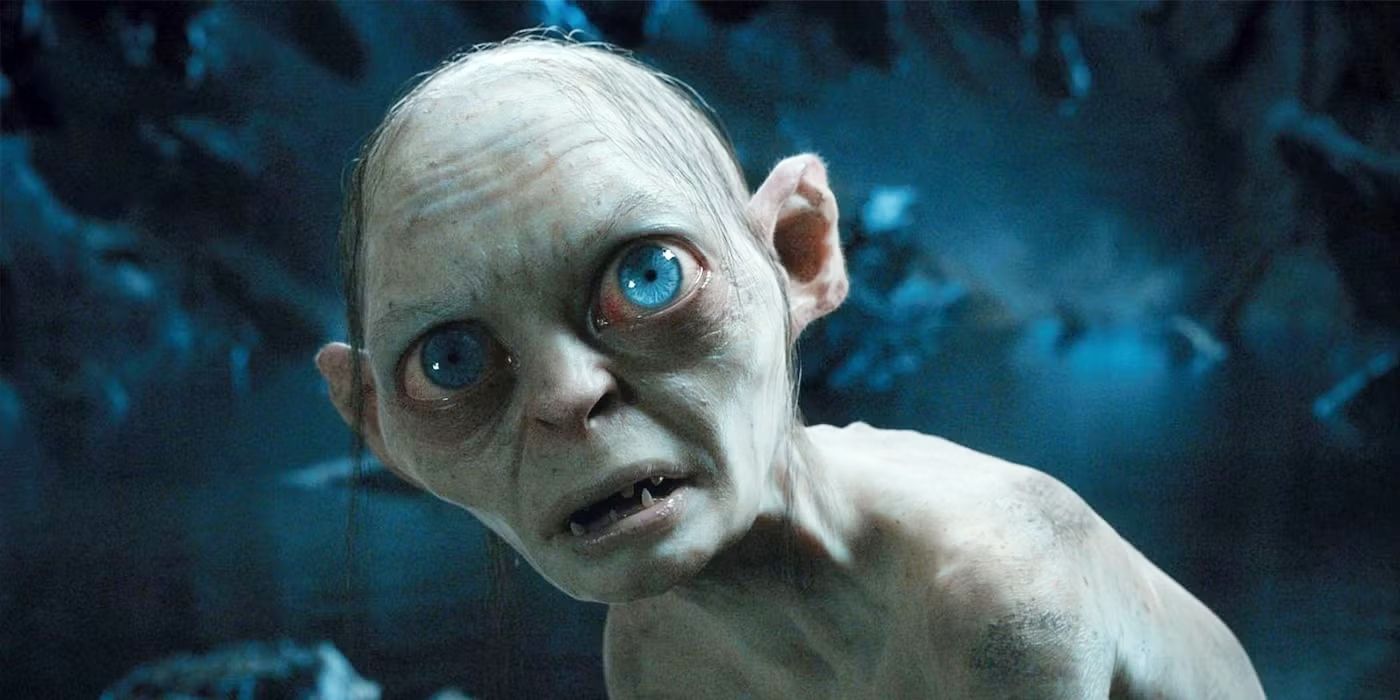
Andy Serkis played a huge role in creating the character of Gollum in Peter Jackson’s The Lord of the Rings and The Hobbit trilogies. He initially signed on just to provide the voice, which was expected to be a short-term job. But Serkis ended up doing much more. He physically acted out the part on set to help other actors interact with the CGI character, provided the motion capture performance, and even played Sméagol, the hobbit who became Gollum after being corrupted by the One Ring. Because of Serkis’s significant contribution, the visual effects artists at Wētā Workshop even redesigned Gollum’s facial features to look more like him.
The techniques used were groundbreaking, and many involved with the production weren’t sure they’d succeed, but Andy Serkis remained confident. He eventually expanded his role to include directing, serving as second unit director on The Hobbit films and becoming the director of the new film The Lord of the Rings: The Hunt for Gollum. Even during The Lord of the Rings: The Return of the King, Serkis contributed creative ideas, including a small but significant detail that showed how Gollum’s character had evolved, something he hadn’t done in previous films.
Gollum Was Not Always a Monster in The Lord of the Rings
The beginning of The Lord of the Rings: The Return of the King shows Sméagol as a fairly typical hobbit. His family, the Riverfolk, liked living near the water, and besides his unusual voice and long hair, he didn’t seem much different from hobbits like Frodo Baggins. J.R.R. Tolkien wrote that hobbits were actually part of the race of Men, meaning Gollum was technically human. However, his appearance and behavior in The Hobbit and The Lord of the Rings were far removed from that.
Gollum changed so drastically that he behaved more like a wild animal than a human being. He lived in a cave, wore very little clothing, and hunted for food with his bare hands, eating it completely raw. Even the distinctive gurgling sound that earned him the name “Gollum” came from the sound Andy Serkis’ cat made when coughing up a hairball. This animalistic behavior extended to his movements; he crawled on all fours like a monkey – a habit that actually helped Serkis prepare for future roles – and constantly hunched over, emphasizing his thin spine. The only time Gollum deviated from this physical state was during the final scenes of The Return of the King.
The One Ring Had a Profound Effect on Gollum in The Lord of the Rings
Following the struggle in the Crack of Doom, Gollum bit off Frodo’s finger and seized the One Ring. After 78 years of being separated from it, he finally held his “Precious” once more. As Gollum gazed at the Ring, he surprisingly stood upright, even losing his balance a little. From that moment until his death, he never touched the ground with his hands again. Andy Serkis, the actor who portrayed Gollum, used this physical change to show that the Ring was briefly restoring some of Gollum’s former self. It was ironic because the Ring, which had originally caused his monstrous transformation, was now making him feel more human. Director Peter Jackson initially disagreed with this interpretation, as revealed in the commentary for The Return of the King.
Andy was really focused on capturing a specific moment: Gollum standing upright on two feet, rather than crawling, for the scene at the very end. He’d even mentioned wanting Gollum to briefly stand up earlier in the filming process, but he insisted those attempts weren’t right. He kept saying, ‘We have to save that moment for the Crack of Doom. It has to be special.’
Peter Jackson may have initially been hesitant about Andy Serkis’ ideas, but he eventually realized it was the correct approach. The shift in Gollum’s physical presence really emphasized the character’s importance. A less confident director might have dismissed Serkis’ suggestions, but Jackson valued his actors’ expertise and dedication to their roles. This strong trust and collaboration were key to making The Lord of the Rings trilogy the masterpiece it is.
Read More
- Clash Royale Best Boss Bandit Champion decks
- Brawl Stars December 2025 Brawl Talk: Two New Brawlers, Buffie, Vault, New Skins, Game Modes, and more
- Best Hero Card Decks in Clash Royale
- Clash Royale December 2025: Events, Challenges, Tournaments, and Rewards
- Call of Duty Mobile: DMZ Recon Guide: Overview, How to Play, Progression, and more
- Best Arena 9 Decks in Clast Royale
- Clash Royale Witch Evolution best decks guide
- Clash Royale Best Arena 14 Decks
- All Boss Weaknesses in Elden Ring Nightreign
- Brawl Stars December 2025 Brawl Talk: Two New Brawlers, Buffie, Vault, New Skins, Game Modes, and more
2025-10-31 06:06